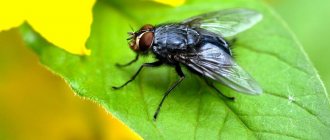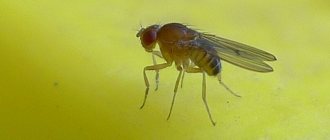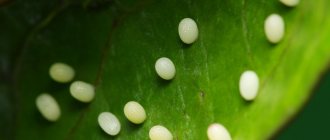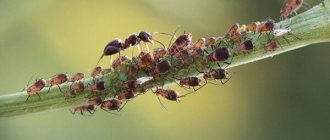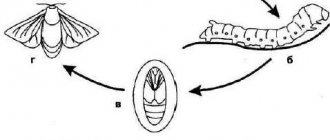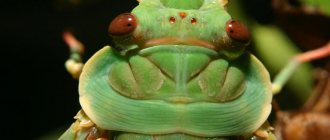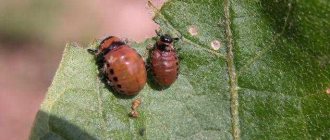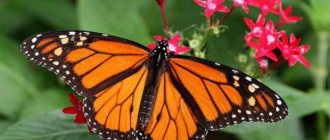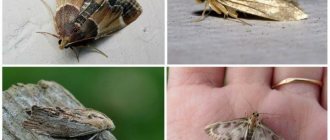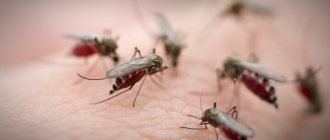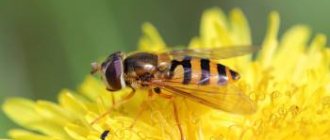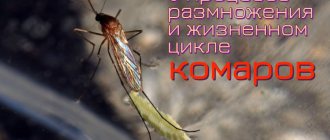The tsetse fly is the most dangerous fly species, killing thousands of people every year. This tiny insect is a carrier of a deadly disease called sleeping sickness.
Tsetse flies are distributed exclusively in African countries, where the low social level does not allow the use of highly effective methods of exterminating dangerous insects.
Due to the characteristics of their habitat, these carriers of a deadly infection prevent the development of fertile lands located near water bodies . Obligate parasites put millions of people and livestock at risk every day.
Habitats
The tsetse fly is widespread in Africa. The habitat of obligate parasites includes countries located south of the Sahara Desert.
The tsetse fly lives in 37 countries, most of which are the poorest in the world. Due to the extremely low social level of the states, the authorities are unable to use chemicals against parasites and provide the population with medications that could save the population from death.
Tsetse flies, which carry a dangerous disease, are common in areas of the African continent that are free from people and have the status of wildlife reserves.
It should be noted that it is the peculiarities of the habitat of insects dangerous to humans that prevent people from developing fertile land.
Video
WORLD OF INSECTS - FLIES: Tsetse FLY
Read the genome of the most bloodthirsty fly in the world
Tsetse fly Glossina morsitans
. Photo by GM Attardo for Tsetse Genome Biology Collection
An international research team has completed sequencing the genome of the tsetse fly Glossina morsitans
, a carrier of trypanosomiasis, a dangerous disease of humans and domestic animals. The tsetse fly is one of the important factors hampering the economic and social development of countries in tropical Africa. Genomic data have elucidated the molecular genetic basis of many of the tsetse fly's unique features, such as its strict blood diet, viviparity, mammalian feeding, and symbiosis with three species of bacteria. This information will help in finding the “vulnerabilities” of the tsetse fly, which is necessary to develop effective means of combating it.
The tsetse fly is known as a carrier of parasitic protozoa - trypanosomes (see Trypanosoma), the causative agents of African trypanosomiasis, or sleeping sickness. A vaccine for this deadly disease has never been created, and available medications have severe side effects. Although the incidence of sleeping sickness in humans has been reduced in recent years, animal trypanosomiasis, also carried by the tsetse fly, remains a serious problem in tropical Africa, making livestock production unprofitable or impossible in many areas (see Animal trypanosomiasis).
Reading the genome of the tsetse fly gives hope for the development of effective methods to combat this harmful insect. An international team of scientists (see International Glossina Genome Initiative) reported the reading and first results of the analysis of the genome of Glossina morsitans
in a series of 11 articles in
PLoS
(
Public Library of Science
) journals and in a summary article in
Science
.
Tsetse fly distribution area. Drawing from the synopsis of E. Pennisi, 2014. Genome Yields Clues to Tsetse Fly's Strange and Deadly Ways
The tsetse fly has a number of unique features that can be taken advantage of when developing measures to combat it, especially if genome analysis makes it possible to understand the molecular genetic basis of these unusual features.
Unlike other blood-sucking insects, not only females, but also males of Glossina
feed exclusively on the blood of mammals.
If ordinary flies lay tens and hundreds of eggs, then Glossina
give birth to one large larva, ready for pupation. During her long (by fly standards) life, a female can give birth to up to 8–10 larvae; Each pregnancy lasts about 10 days. Developing in the mother's body, the larva feeds on milk, which is produced in special mammary glands. They evolved from accessory glands that female insects also have, but serve more prosaic purposes, such as producing components of egg membranes.
The tsetse fly genome is 366 million base pairs, about twice that of the Drosophila. Moreover, the order of genes in the chromosomes of both flies has much in common. The difference in genome size is due to longer “nonsense” fragments (introns and intergenic spaces) in tsetse compared to Drosophila. Transposable elements make up 14% of the genome in tsetse but only 3.8% in Drosophila. All this is most likely explained by the low fecundity and lower effective population size of the tsetse fly, which, in turn, leads to a weakening of purifying selection that removes “extra” regions from the genome (see article by M. Lynch, JS Conery, 2003. The Origins of Genome Complexity).
As befits a professional bloodsucker, the tsetse fly has an extensive repertoire of specialized genes that operate in the salivary glands and encode proteins that make bloodsucking more efficient. These proteins, in particular, prevent blood from clotting and suppress the victim's immune response. The set of such proteins in tsetse is much larger than in other blood-sucking insects. As it turned out, in flies infected with trypanosomes, the activity of many of these genes in the salivary glands is suppressed, while the expression of genes associated with the response to stress and the repair of damaged cells, on the contrary, is increased. Apparently, trypanosomes damage the salivary glands and disrupt the genes of the infected fly to prolong blood sucking and thereby increase the likelihood of their own entry into the blood of the mammal.
Tsetse has a more extensive repertoire of aquaporin proteins than other insects, which are used to quickly pump water across cell membranes. Aquaporins are necessary for the blood-sucking fly, firstly, to pump out excess water from the blood it drinks, and secondly, to dilute the secretion of the mammary glands during milk production. Disabling aquaporin genes leads to a longer pregnancy, that is, a delay in larval development, which negatively affects the fertility of females.
The tsetse fly genome contains a large set of milk protein genes, which in their properties and functions are very similar to mammalian milk proteins. These include, in particular, fat emulsifiers, sources of amino acids and phosphate group transporters. Many milk protein genes were formed in tsetse ancestors through duplications.
The authors studied in detail the regulation of milk protein gene expression. It turned out that these proteins are synthesized exclusively in the mammary glands, and the level of production is closely related to the stage of pregnancy: the larger the larva, the more milk proteins the female produces. Violation of the synthesis of milk proteins leads either to a delay in the development of the larva or to miscarriage, and the prematurely born larva dies. The authors were able to identify the regulatory region (enhancer) of the main milk protein gene ( milk gland protein 1, mgp1
), due to which gene expression occurs only in the mammary glands, adjusting to the phase of the reproductive cycle.
To study the properties of the discovered enhancer, the researchers combined it with the LacZ
(see Reporter gene) and with the green fluorescent protein gene, and the resulting constructs were inserted into the Drosophila genome.
Experiments have shown that the tsetse fly regulatory sequence ensures expression of the controlled gene in Drosophila only in the accessory glands (from which the tsetse mammary glands are derived) and only in actively reproducing females. Thus, the regulatory system that controls the synthesis of milk proteins turned out to be evolutionarily conservative: tsetse flies did not “invent” it, but inherited it from their oviparous ancestors. The authors were also able to identify a gene encoding a regulatory protein (transcription factor) that interacts with the detected enhancer. It turned out to be the homeobox gene Ladybird late
(
lbl
).
Artificially reducing the expression of lbl
leads to a decrease in the production of milk proteins, which negatively affects the fertility of tsetse females.
Thus, lbl
is a convenient target for the development of new means of controlling the abundance of
Glossina
.
During lactation, the genes for the 12 most important milk proteins account for half of all transcriptional activity in the female's body. Massive protein synthesis during lactation creates the threat of oxidative stress, which the pregnant fly copes with by increasing the production of special antioxidant enzymes (see antioxidant enzymes). Disabling the genes for these enzymes leads to the fact that with each pregnancy, the female’s fertility quickly decreases, whereas normally she does not show signs of reproductive aging until the birth of 8–10 offspring. Thus, the genes for antioxidant enzymes are another specific “weak spot” of the tsetse fly.
The repertoire of genes responsible for carbohydrate metabolism in tsetse was sharply reduced compared to other flies, which is directly related to its blood diet. Content of sugars and glycogen in Glossina
extremely low. Moreover, among the taste receptors of the tsetse fly there were not even sweet taste receptors (which, of course, are found in all normal insects that do not disdain carbohydrate foods). In the set of proteins associated with metabolism, the tsetse fly has a number of common features with other bloodsuckers.
Like many other insects with a specialized diet, the tsetse compensates for the lack of essential nutrients and vitamins through cooperation with symbiotic bacteria that are inherited from mother to children. The most important symbiont of tsetse is the bacterium Wigglesworthia
, inhabiting the cells of a special organ - the bacteriome and ducts of the mammary glands.
Without this symbiont, most pregnancies end in miscarriage, that is, the fertility of females is sharply reduced. Wigglesworthia
genome contains the genes needed to synthesize B vitamins, whereas
Glossina
only has the genes needed to transport them. Obviously, the symbiont provides the host with vitamins.
Another symbiont of the tsetse fly, inherited through the maternal line, is the bacterium Wolbachia,
living mainly in the gonads. It causes so-called cytoplasmic incompatibility in flies (see Cytoplasmic incompatibility), that is, the death of offspring from crossing an infected male with an uninfected female. In this way, the bacterium reduces the fertility of uninfected females, which indirectly gives a reproductive advantage to infected females, who pass Wolbachia to their offspring. This is an adaptation of the bacterium that contributes to its accelerated spread in the host population.
The authors discovered three integrated fragments of the Wolbachia genome in the tsetse genome (for other cases of transfer of Wolbachia genes into the host genome, see: Animals exchange genes with parasitic bacteria, “Elements”, 09/05/2007). Bacterial insertions are not transcribed, but may play some role in gene regulation: this issue requires separate study. In addition, in the genome of the tsetse fly there were built-in viral genes characteristic of bracoviruses of braconid parasites (about parasitic parasites and their viruses, see: Parasitic parasites suppress the immune defense of their victims with the help of domesticated viruses, “Elements”, 02/19/2009). Most likely, this means that tsetse flies are parasitized (or were previously parasitized) by some unknown parasitoids. This fact opens up another possible direction for the development of “biological weapons” against the sleeping sickness carrier.
The third symbiont of the tsetse fly, the bacterium Sodalis
, found in all tissues of the fly, as well as in the digestive tract.
These symbionts are interesting because they appear to influence the likelihood of a fly becoming infected with trypanosomes. Sodalis
bacteria produce the enzyme chitinase, which disrupts the integrity of the peritrophic membrane, which facilitates the penetration of trypanosomes from drunk blood into insect tissue.
The authors note that one of the ways to combat trypanosomiasis may be genetic modification of Sodalis
.
For example, if the symbionts are deprived of the ability to produce chitinase, the infection of flies with trypanosomes should decrease. Moreover, genes for protective proteins (for example, antibodies) can be inserted into the Sodalis
, which will selectively attack trypanosomes in the fly intestine (see: L. De Vooght et al., 2012. Expression and extracellular release of a functional anti-trypanosome Nanobody in
Sodalis glossinidius
, a bacterial symbiont of the tsetse fly).
Bacterial symbionts of the tsetse fly. Wolbachia
(
red circles
) is localized in the ovaries (
Ovaries
).
Wigglesworthia
(
green sticks
) lives inside the cells of a special organ - the bacteriome (
bacteriome
) and in the ducts of the mammary gland (
milk gland
).
Sodalis
(
blue sticks
) is found in all tissues and in the digestive tract (
Digestive tract
).
Intrauterine larva
- a larva that develops in the uterus;
she has her own bacteriome ( Larval bacteriome
) with
Wigglesworthia
inherited from her mother
.
Figure from a summary article in
Science
The repertoire of immune defense genes in the tsetse fly turned out to be greatly depleted compared to Drosophila. This may be explained, firstly, by the smaller number of pathogenic microbes in the blood of mammals compared to the food of Drosophila (rotting fruits), and secondly, by the need to preserve the vital symbiont Wigglesworthia intact.
Other insects with obligate bacterial symbionts (for example, aphids) also have a poor repertoire of antibacterial proteins.
The authors compiled a detailed list of tsetse fly receptor proteins. Accurate data on what smells, tastes and colors the fly perceives should help in the development of all kinds of baits and traps. It turned out that tsetse has fewer olfactory receptors than other insects with readable genomes (fruit flies, mosquitoes, bees). This is logical, given the tsetse fly's strict dietary preferences and the narrow range of hosts on whose blood it can feed. True, one Drosophila olfactory receptor, the work of which is associated with the female’s choice of a sexual partner, turned out to be represented in Glossina
as many as six paralogues. Does this mean that tsetse females are more picky when choosing a partner? This would be logical, given the enormous maternal contribution to the offspring.
Like other fast-flying dipterans, the tsetse fly, judging by its genome, has excellent vision, adapted for efficient search of prey (and in males, also for searching for females). Color vision is based on four light-sensitive proteins called opsins, one of which is tuned to blue light. This is consistent with tsetse flies being attracted to anything blue (an important consideration for trap design).
Thus, even the very first, superficial analysis of the tsetse fly genome made it possible to identify a number of “vulnerabilities” in the biology of the harmful insect. Let's hope that this knowledge will help, firstly, to finally defeat sleeping sickness, and secondly, to cope with trypanosomiasis in animals, which should radically improve the prospects for the economic and social development of countries in tropical Africa. True, the experience of fighting malaria and other dangerous diseases transmitted by insects shows that one can hardly count on quick success: reading the genome of the vector (and, of course, the pathogen itself: the genome of Trypanosoma brucei
was read back in 2005) is just a necessary first step. The path from genomic data to effective means of insect population control is, unfortunately, long and difficult.
Sources:
1) 11 articles devoted to the analysis of the tsetse fly genome, Tsetse Genome Biology Collection, in journals of the
PLoS
(
Public Library of Science
).
2) Summary article in Science
: J. Watanabe et al.
(International Glossina Genome Initiative). Genome Sequence of the Tsetse Fly ( Glossina morsitans
): Vector of African Trypanosomiasis //
Science
.
2014. V. 344. P. 380–386. 3) Synopsis: E. Pennisi. Genome Yields Clues to Tsetse Fly's Strange and Deadly Ways // Science
. 2014. V. 344. P. 349–350.
Alexander Markov
What does it look like
The structure of the tsetse fly, classified as a member of the order Diptera, includes three main sections: thorax, abdomen, and head. The size of the insect varies from nine to fourteen millimeters.
The tsetse fly looks like this: reddish-gray color, the presence of four longitudinal stripes of a dark shade on the back.
Features of the appearance of an obligate parasite are called:
- A forward-facing proboscis that is strong enough to pierce the hides of cattle.
- The transparent wings have a pattern that can be compared to the outline of a hatchet.
- The antennae have forked hairs.
- At rest, the wings of an insect are folded on top of each other on its back.
This insect, which provokes the development of sleeping sickness, is capable of drinking a volume of blood equal to its own weight.
An interesting feature: the reproductive organs of females are large in size, which allows them to accommodate a larva that is in the third stage of development.
Fly bite: local symptoms and physiological changes
The body's reaction to a fly bite occurs due to mechanical damage to the skin and the toxic effect of saliva, and symptoms may be local in nature or reflected in changes in the general condition of the body. Farm animals suffer from attacks of blood-sucking parasites much more than humans.
A small pinpoint wound and a red bump around it are the main external manifestations of a fly attack. After an attack by a large number of insects, the body may be covered with many bites located at some distance from each other. The following symptoms indicate complications:
- redness and swelling increase;
- children may develop hives;
- suppuration has formed near the wound due to the penetration of a secondary infection;
- The elevated body temperature does not subside for several days, general weakness and sleep disturbance are observed.
In animals, after multiple and regular fly bites, the volume of milk yield, meat gain, and the quality of wool deteriorate significantly. Scratches, ulcers and other damage that require treatment appear on the skin.
Why is it dangerous?
Tsetse flies are not poisonous, but they are the most dangerous species for humans and animals.
This is due to the fact that insects are carriers of the dangerous disease trypanosomiasis, the causative agents of which are microscopic parasites of the same name that constantly live in the bodies of large antelopes and buffalos.
The disease is especially dangerous for humans, leads to damage to the immune and nervous systems and, in the absence of timely measures, leads to death.
What diseases does it carry?
The main danger of the tsetse fly is as follows: the insect is a carrier of the disease trypanosomiasis, which is dangerous for people and animals.
Depending on the specific characteristics, the disease is divided into two main subcategories:
- Rhodesian or eastern form of sleeping sickness. A characteristic feature of this disease is its rapid course, associated with damage to the heart muscle, brain, and an increase in the clinical picture.
- Gambian form. It has a long course. From the moment of infection to death, if timely measures are not taken, it takes from one to five to six years. The disease is divided into two periods. The first lasts up to five years. During this time, the following clinical picture is typical: skin rashes, periodic fevers, acute headaches, swollen lymph nodes. The second period is characterized by a rapid course, accompanied by destruction of the nervous system, the main symptoms: tremors of the limbs, disorientation, drowsiness. In severe cases, complete paralysis may occur. The use of drugs at this stage is rarely characterized by the appearance of positive results.
Regardless of the type of sleeping sickness, the classic symptoms of this disease are: impaired coordination, motor ability, numbness, trembling of the limbs, sleep disturbance.
The consequence is confusion, disorientation in space, increased temperature, feverish state, and joint pain.
The primary clinical sign of invasion is the formation of dense chancre, after opening of which a noticeable scar remains.
In the early stages of sleeping sickness, treatment is effective through the use of a number of medications: Suramin, Pentamidine. These medications help suppress parasites.
However, their use in the later stages of the disease can lead to counterproductive results and worsen the patient’s condition. The difficulty of treatment lies in the rapid mutation of microscopic parasites and their resistance to the effects of medications.
Consequences of bites
The consequences of a tsetse fly bite are equally dangerous for livestock, wild animals, and people. Insects, as mentioned above, are carriers of the Nagan virus, trypanosomes.
A tsetse fly bite can cause the following negative consequences:
- Males and females of tsetse flies consider wild and domestic animals as food sources. An attack by a parasite can cause severe consequences for the animal, including death. Every year, up to three million animals die from bites, causing massive damage to agriculture. There is a vaccine that prevents animals from being infected with a dangerous virus, but due to the high level of poverty, not every farm animal owner can afford to treat their entire livestock. Infection of livestock with the Nagana virus leads to an increase in the number of spontaneous abortions, a decrease in the volume of dairy products, and weakening of the affected animal.
- The consequences of a fly bite are no less dangerous for humans. Microscopic parasites, which may be present in the insect's saliva, penetrate the human systemic bloodstream. Sleeping sickness develops, which can cause death if not treated in a timely manner.
Interesting fact: tsetse do not attack zebras, which is due to the specific color of these animals. Flies simply do not perceive equids, not considering them as prey.
Method of defeat
The bite of a tsetse fly can cause damage not only to herbivorous mammals, but also to the human body. They very quietly land on exposed areas of the skin, and once on clothing, tsetse explore the area until they find an unprotected area. The bite usually causes pain, subsequently accompanied by itching. On the insect's proboscis there is a chain of small teeth, which allows them to instantly immerse the trunk to great depths. Next, saliva is injected, which prevents blood clotting.
All actions occur almost instantly, and after a split second the fly begins to rapidly absorb blood, which becomes noticeable by its instantly swelling abdomen. It is noteworthy that clothing is not able to protect its owner from the bite of a tsetse fly. Not finding an open area of skin, the insect begins to make tests on heated areas until it reaches the goal. It is important to understand that the length of the insect’s trunk allows it to bite even a rhinoceros whose skin thickness exceeds 4 cm.
Structure
The body structure of the tsetse fly includes three sections: head, abdomen and thorax.
Additional characteristics:
- The chest consists of three elements fused together.
- Three pairs of paws.
- The oral apparatus of insects includes microscopic elements that can be called teeth. The fly uses them to chew through blood vessels.
- The parasite's saliva contains a special enzyme that prevents the victim's blood from clotting.
Depending on the species, tsetse flies can live near bodies of water and in areas with arid climatic conditions.
Types of tsetse flies
It’s hard to imagine how much effort and probably suffering it took for entomologists to study and group dangerous insects into separate groups:
- representatives of the morsitans group live mainly in savannah forests and savannas, easily adapting to a relatively dry climate. It was these flies that contributed to the expansion of the area of wooded savannas, which is why Sierra Leonean pastoralists stopped raising horses;
- species of the fusca group are typical inhabitants of tropical rainforests; their bites are mainly inflicted on wild mammals, and less often on people and livestock;
- Tsetse flies from the palpalis group are the most moisture-loving, but they are attracted not by jungle swamps, but by open areas along river banks, where fishermen and swimmers most often become victims of insects.
It is in such natural conditions that the most dangerous insects on the planet live and breed safely, because they do not experience a shortage of food sources.
Life cycle and reproduction
The life cycle of the tsetse fly includes three stages: larva, pupa and adult.
These insects are viviparous; throughout the life of the female, the female reproduces no more than eight to twelve complete individuals.
During one breeding cycle, the female bears one larva, which is viable. Immediately after birth, the individual buries itself in the ground and pupates.
The lifespan and development of an obligate parasite ranges from five to six months. During this period, the female mates only once.
In this case, the male’s reserve of productive material is sufficient to fertilize several larvae, which are gestated by the female sequentially every twenty to thirty days.
Fly bite: consequences
The autumn fly attacks people not only outdoors, but also indoors. She can fly into a country house or apartment through a balcony, open window or window.
Flies not only cause discomfort, but can also carry pathogens of infectious and intestinal diseases. After an insect attack, a person feels sharp pain and unbearable itching. Young children react especially acutely to the bites of the autumn firebug. If the itching sensation is not blocked in time, they will begin to scratch the wound and may cause an infection.
Serious consequences such as acute allergic reactions and anaphylactic shock are rare. They can occur if a person has an intolerance to one of the components of the saliva of a blood-sucking insect.
The fly's bite causes serious damage to agriculture: the consequences of massive attacks by parasites are expressed in a significant decrease in milk yield and weight loss in animals. Insects fly long distances and simultaneously transmit pathogens of invasions and infections (tularemia, anthrax, erysipelas, setaria, tuberculosis, swine fever). Not only blood-sucking flies, but also licking flies cause anxiety and discomfort to farm animals. They crawl around the body, feed on secretions from the eyes and mucous membranes, and interfere with animals’ grazing. All this negatively affects the productivity of livestock. In addition, non-blood-sucking Siberian and viviparous field flies carry the causative agents of thelarosis.
What is the danger of the parasite
When examining the question of the tsetse fly, why is a bite dangerous , it is worth noting that dipterans are carriers of the severe pathology of trypanosomiasis.
The bite itself does not lead to death; unpleasant consequences can be traced after the victim is infected by the insect vector. The causative agents of trypanosomiasis are microorganisms that live in the bodies of buffaloes and antelopes. Since tsetse feeds on the blood of animals and people, infection is inevitable. In antelopes, trypanosomes do not manifest themselves in any way, since the animals are immune to this disease. When microorganisms enter the human body, they change their protein shells and transform into stronger species that destroy systems and organs.
Once in the human blood, trypanosomes gradually destroy the immune system and parts of the central nervous system. Death occurs within a few months.
How to get rid of tsetse flies?
As already mentioned, scientists are trying to find a way to destroy insects, but so far they have not succeeded.
To combat the tsetse fly in the 20th century, the following methods were used:
- Scorched earth. To do this, they killed all the livestock that the tsetse fly fed on. Because of this, the insects died. But this method was effective only in the short term; in the long term it turned out to be useless, because the fly fed not only on large animals, but also on reptiles and rodents.
- Deforestation. This method also cannot be called effective. As the name suggests, it involved cutting down forests so that the tsetse fly would lose its usual living conditions. But it is obvious that this method only brings harm, not benefit.
- Use of pesticides. To do this, special preparations were sprayed from airplanes and applied to animals. But the method did not bring the desired effect.
- Setting traps. A simple mechanical method gives good results. To make a trap, you need to take dark cloth or buffalo hide and soak it with insecticides. To attract flies, an artificially created smell is used, reminiscent of an animal's breath or urine. This method helped reduce the tsetse fly population.
- Sterilization of males. At the moment, the method is the most effective. To sterilize the males, they were irradiated with radiation and released into places where insects were crowded. After mating, the females were unable to produce offspring, and their eggs remained unfertilized. This method was especially effective in Zanzibar. Its disadvantage is the lack of a water barrier with neighboring states, as a result of which healthy males entered the region, and tsetse flies multiplied again.
The tsetse fly is a terrible insect that causes serious harm to animals and people. But at the same time, there are people who believe that the insect is necessary. In particular, wildlife conservationist Bernhard Grzimek believes that the tsetse fly protects pristine nature from the invasion of civilization.
Symptoms of infection
When the tsetse fly in the photo bites a person or animal without proper treatment, they die gradually. Signs of pathology may not appear immediately, but after several days or even years.
Trypanosomes can cause the development of:
- Rhodesian sleeping sickness. It appears 5-7 days after the bite. The main symptoms include inflammation of the lymph nodes and swelling of the throat. A chancre appears on the body, similar to a boil. After a few weeks it goes away, then a scar is visualized in its place. The patient complains of headaches, tachycardia, fever, lack of appetite, joint pain, and insomnia. The body becomes covered with spots, the person falls into a coma.
- Gambian sleeping sickness. Since this form is chronic, the symptoms are less pronounced than in the previous type. Death can occur even several years after infection. The pathology is dangerous for both humans and monkeys.
- Nagana. The disease develops if a fly bites an animal. Manifested by fever and swelling. Pathology is more often diagnosed during rains and warm seasons. An infected animal has increased fluid secretion from the tear ducts and nasal passages, exhaustion, anemia, and swelling. The disease is not dangerous for goats and mules.
In both acute and chronic forms of sleeping sickness, patients experience impaired coordination of movement, numbness and tremors of the limbs, insomnia, severe headaches, disorientation, confusion, increased temperature, and fever.
About CC
Features of reproduction
Insects mate only once. After fertilization, females do not lay eggs, but carry them in a special sac. The larvae develop one at a time. While in the fly's body, they feed on the secretions of a special gland. The development of the offspring takes 1-2 weeks, then they are born. The larva spends very little time outside the mother's body. She is born already in the third and last age.
After a few hours, the larva burrows 2-3 cm into the soil and turns into a pupa. The hard body of the pupa is dark brown or black. It reaches 10 mm in length. This phase lasts 3-4 weeks. A young fly emerges from it.
Due to the nutritional value of the blood, the larva and pupa do not require additional food resources. They exist and develop due to the reserves made by the imago. During her life, a viviparous female brings 8-10 larvae.
Information. Glossina fly quickly and silently, they are very persistent and tenacious. Killing a fly is not easy; even after being hit and its wings damaged, it attacks the victim again.
Where does the tsetse fly live?
As already mentioned, the tsetse fly is found in Africa. It can be seen south of the Sahara, in the equatorial and subequatorial zones. The habitat of tsetse flies includes about 37 countries: Nigeria, Kenya, Uganda, Cameroon, Gabon, etc., and 32 countries from the entire list are the poorest in the world. The parasite prevents the development of fertile lands, which slows down the development of the state’s economy. For this reason, scientists are trying to find a way to destroy the tsetse fly, but so far without success.
The widespread spread of the tsetse fly began in 1887. The plague virus was brought from Europe to Africa and led to mass deaths of local residents, livestock and wild animals. As a result, many pastures were abandoned, overgrown with bushes and became ideal habitat for the tsetse fly. Insects have settled in many areas of Africa where they were not previously found. The spread of tsetse flies was accompanied by the infection of people with sleeping sickness, resulting in millions of deaths.
Fighting methods
The first attempts to get rid of the tsetse fly were made at the beginning of the last century, then hundreds of thousands of animals were exterminated: elephants, lions and ungulates. However, this did not affect the state of the tsetse population in any way; the flies survived by feeding on the blood of mouse-like rodents, birds and amphibians, which are also carriers of trypanosomiasis.
Cutting down the bushes also did not bring success, and in the 40s the main method of control was the use of the insecticide DDT against insects. But this turned out to be a temporary measure: like most insect pests, the tsetse’s body quickly acquires immunity to pesticides.
Not all tsetse fly species are carriers of trypanosomiasis, but visitors to exotic Africa who are bitten by an insect with characteristic symptoms are advised to seek immediate medical attention.
